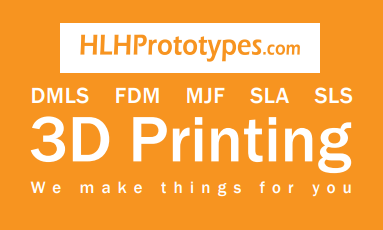How 3D printing can reduce risks for hardware startups.

Hardware is difficult and expensive making it a risky venture for many people and startups. The intricacies of getting a hardware project designed, manufactured and to market mean most fail. There are ways to reduce your risks though and 3D printing can allow you a fast and inexpensive way not just to prove concepts and get funding but also reduce investment and risks early on in your journey.
Additive manufacturing technologies and materials are varied and diverse now and different options make sense at different points in the development of your project.
Early on while you are still proving the concept and designing the parts and mechanisms that will make your product work you can take advantage of low-cost desktop FDM/FFF to quickly and inexpensively manufacture parts and prototypes. These can allow you to check fit. Form and function and make sure things fit together as they should. These machines are inexpensive enough that most early stage startups can afford one, but it might make more sense to find a local resource willing to let you use theirs.
Once you move on to more advanced prototyping working with a specialist manufacturer will be a better option. They have industrial 3D printing equipment and skills and experience to ensure they manufacture the parts and prototypes you need. They can also help with finishing options to make your prototypes look like the real thing, which is an invaluable tool when going before investors. A full working prototype is also a minimum prerequisite for a Kickstarter or Indigogo campaign.
Moving forwards with early stage and low volume production, industrial FDM, SLA or SLS 3D printing can be used. Compared to a mass produced part the unit cost for parts via 3D printing can look high but when you factor in the cost of tooling and the time taken to make it, at lower volumes 3D printing is very cost effective.
One distinct advantage of 3D printing is also the ability to get customer feedback and make changes. This would be incredibly slow and expensive once you have the production tooling already made.
Industrial additive manufacturing technologies provide different results to more conventional manufacturing processes. Due to the way in which the parts are made, layer by layer, and the constraints of some of the materials it might be difficult to replicate an injection molded part via 3D printing. So if a high gloss coloured finish is what you are looking for 3D printing might not be the answer. But as long as you appreciate and utilise the unique character of the 3D printed part this can become an interesting design element.
Depending on the process you choose, the types of materials available differ. For SLA, for example, the materials are all photosensitive resins, but there is an increasing range available all with different visual and functional characteristics.
SLS machines build parts in PA (nylon) which is a touch and durable plastic and perfect for functional parts and anything that needs some strength and stability.
FDM has many common injection molding materials available but is the process with the most obviously 3D printed surface finish as the layers are highly visible.
Any of these technologies can be selected to manufacture prototypes or low volume production runs. To find out which might work best for your project, talk to us today info@hlhprototypes.com
